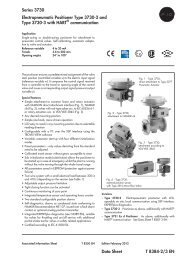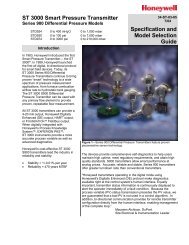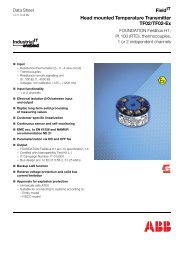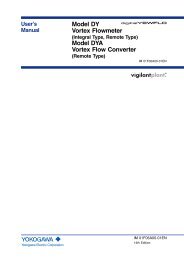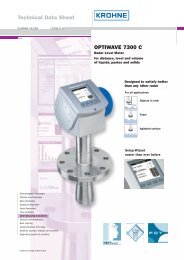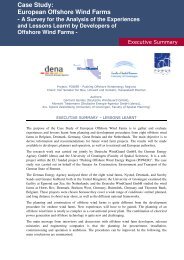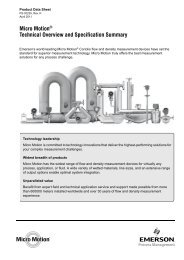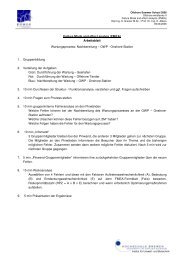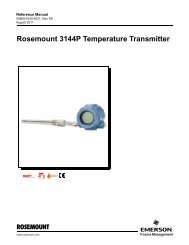Levelflex M FMP40 - Process Centre Of Excellence.
Levelflex M FMP40 - Process Centre Of Excellence.
Levelflex M FMP40 - Process Centre Of Excellence.
You also want an ePaper? Increase the reach of your titles
YUMPU automatically turns print PDFs into web optimized ePapers that Google loves.
Technical data <strong>Levelflex</strong> M <strong>FMP40</strong> with HART/4...20 mA<br />
Cleaning the probe Depending on the application, soilings or sediments can accumulate on the probe. A thin, even layer<br />
only influences measurement slightly. Thick layers can dampen the signal and then reduce the<br />
measuring range. Heavy, uneven build-up, adhesion e.g. through crystallisation, can lead to<br />
incorrect measurement. In this case, we recommend that you use a non-contact measuring<br />
principle, or check the probe regularly for soiling<br />
Electromagnetic<br />
compatibility (EMC)<br />
When installing the probes in metal and concrete tanks and when using a coax probe:<br />
• Interference Emission to EN 61326, Electrical Equipment Class B<br />
• Interference immunity to EN 61326, Annex A (Industrial area) and NAMUR Recommendation<br />
NE 21 (EMC)<br />
The measured value can be affected by strong electromagnetic fields when installing rod and rope<br />
probes without a shielding/metallic wall, e.g. plastic, and in wooden silos.<br />
• Interference emission to EN 61326, Class A equipment.<br />
• Interference immunity: the measured value can be affected by strong electromagnetic fields.<br />
10.1.5 Operating conditions: <strong>Process</strong><br />
<strong>Process</strong> temperature range The maximum permitted temperature at the process connection (see Figure for measuring point) is<br />
determined by the O-ring version ordered:<br />
! Note!<br />
! Note!<br />
O-ring-material min. Temperature max. Temperature 1)<br />
FKM (Viton) -30 °C/-22 °F +150 °C/302 °F<br />
EPDM -40 °C/-40 °F +120 °C/248 °F<br />
FFKM (Kalrez) -5 °C/23 °F 2)<br />
+150 °C/302 °F<br />
1) For PA coated probes, the maximal admissible temperature ist 100 °C (212 °F).<br />
measured<br />
here<br />
2) The min. temperature of FFKM may be -15 °C (5 °F) if the max. temperature of +80 °C (176 °F) is not<br />
exceeded.<br />
The medium temperature can be higher.<br />
However, when using rope probes the stability of the probe rope is reduced by structural changes<br />
at temperatures over 350 °C.<br />
The bare metallic probes are only insulated in the area of the bushing. Thus there is no danger of<br />
electrostatic charging. The PA-coated rope has been tested and there is no dangerous electrostatic<br />
charging. As a result, there are no restrictions on use in Ex-areas for any of the probes.<br />
<strong>Process</strong> pressure All models: -1...40 bar/585,9 psi.<br />
This range may be reduced by the selected process connection.<br />
The pressure rating (PN) specified on the flanges refers to a reference temperature of 20 °C, for<br />
ASME flanges to 100 °F.<br />
Note!<br />
All <strong>Levelflex</strong> probes have two levels of sealing. There is an O-ring seal and a moulded seal behind<br />
that.<br />
96 Endress + Hauser


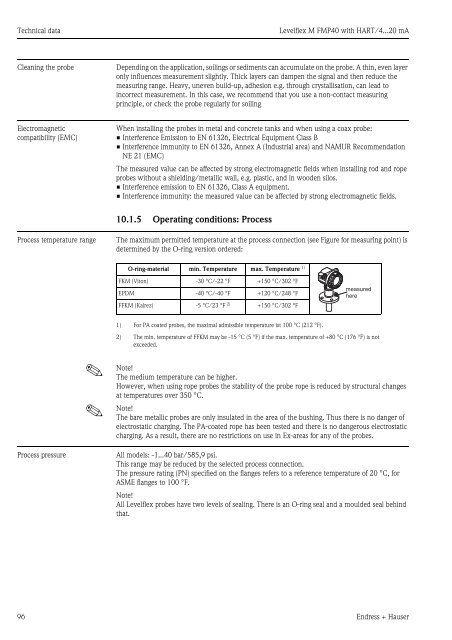
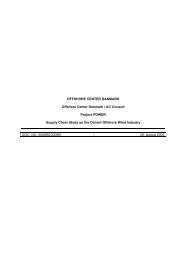
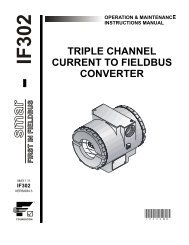
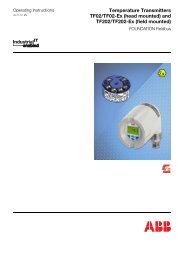
![[MI 019-120] I/A Series Mass Flowtubes Models CFS20 ... - Invensys](https://img.yumpu.com/48832334/1/190x245/mi-019-120-i-a-series-mass-flowtubes-models-cfs20-invensys.jpg?quality=85)
